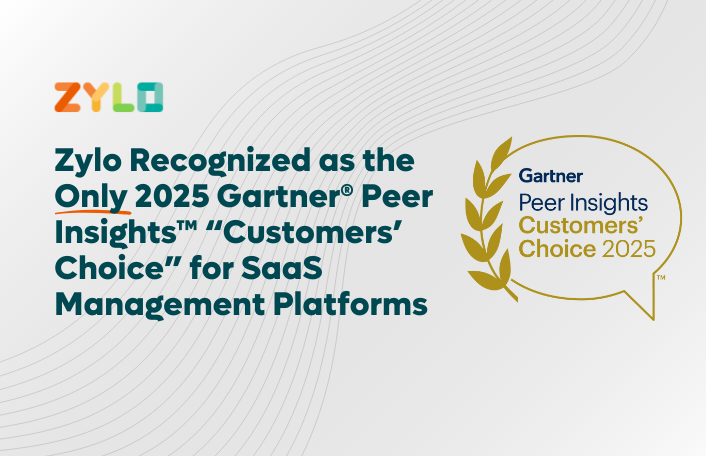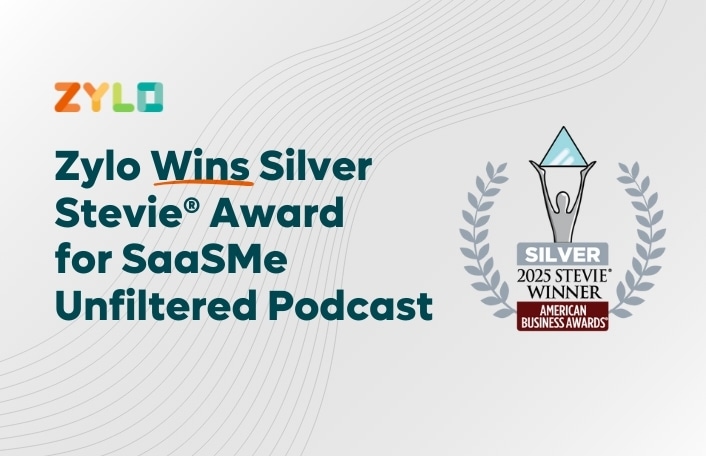
Zylo Recognized as the Only “Customers’ Choice” Provider in 2025 Gartner® Peer…
Zylo is the only provider recognized as both a Gartner Magic...
Back
Back
Search for Keywords...
News & Press

01/11/2017
B2B PAYMENTS As SaaS Booms, Corporates Change Their Spend Management Tunes
Software is no longer the abstract, complicated kind of technology only handled by the IT department. Today, if a professional wants to purchase some kind of software — like an email tracking solution for the marketing team or a lead generation tool for the sales team — it’s as easy as online shopping.
The rise and subsequent democratization of Software-as-a-Service has pulled organizations into the cloud and offered new opportunities for efficiency. But it’s created a headache not only for IT departments but for the procurement team as well, as any employee can buy a SaaS solution.
“You have a lot more people buying software and doing it whenever they have a need,” explained Cory Wheeler, VP of services at SaaS optimization company Zylo, in a recent interview with PYMNTS. “Your company is buying a heck of a lot more software than they ever used to buy, because they used to go through IT. It used to be centrally managed.”
Zylo CEO Eric Christopher added that the procurement of SaaS is no longer funneled through a single point in a company.
“One SaaS provider might be paid out of tens of budgets. It may come out of many different departments, and that means a lot of challenges internally,” he explained.
This situation has created a need for the IT and procurement teams — and the enterprise overall — to gain visibility into what software they’re procuring and how much they’re spending on it.
Rogue procurement is one common issue for corporations. Research released in 2015 from Wax Digital and Redshift found that nearly half of procurement officials consider themselves as having a “very close” relationship with other departments at their firms, including IT, finance sales and marketing. The majority also said that their procurement guidelines for company employees are clear and formal.
But other departments don’t agree. Less than a quarter of sales and marketing professionals, for instance, considered their organizations’ procurement rules to be clear, the report found.
Christopher said that, as SaaS offerings multiply and as procurement of these software solutions grows easier, it’s more difficult for buyers of these tools to be smart about their choices. This kind of “shadow IT,” as he explained it, makes it more difficult for a company to make sure that the software it’s procuring is the best option available. It’s also creating tension between IT and procurement departments and the rest of the organization, Christopher added, with IT and procurement less able to monitor which SaaS solutions employees buy.
But a larger, more pressing issue of the SaaS revolution revolves around corporate spend — both transparency and optimization.
“The shift in the cloud for large software deployments is going to end up saving a company money,” Wheeler noted, “and procurement gets on board with that all day long.” But the nature of SaaS means spend management can slip through executives’ line of sight.
For instance, SaaS is often procured on a subscription basis, meaning businesses will see money flowing out of the books every month or so, instead of paying in one lump sum. Further, many SaaS providers offer discounts when software subscriptions are purchased for multiple months or years, Christopher said, forcing businesses that manage the renewal process to take a different approach to cash management and forecasting.
“Cash view is becoming more important than ever,” Wheeler continued, adding that subscription software services force businesses to take an outward view of their finances. “One of our largest customers may want to understand the impact on cash view over the next 12 months — they don’t know where the spend is and what they’ll be on the hook for six months from now. It feeds into the larger ability for business units to be able to budget and predict what they’ve got going on for the year.”
He noted that, for many organizations, the cloud and Software-as-a-Service present a very real opportunity to pull business processes into a more efficient platform. “But with no tools to be able to manage that, they’re flying blind,” he warned.
This presents both a spend optimization issue and an issue of transparency across IT, procurement and other players of the company. These challenges will become less avoidable, however, as businesses continue to embrace the cloud.
“There are two types of companies we’re working with,” Christopher explained “One is that they’re cloud-first. They’ve really bought into the idea that the cloud is the right place to be … The second group are larger enterprises that have historically not been cloud-first, but they plan on moving and becoming cloud-first.”
Christopher added that, as much as businesses view the cloud as an opportunity, some firms certainly see the problems this SaaS revolution can create.
“It’s an upward curve,” he said. “The number of solutions being adopted and purchased is higher and higher.” Often, software can land in the top five or even top three expense categories for a company, he said. “And there’s not a lot of monitoring or control.”

Zylo is the only provider recognized as both a Gartner Magic...

Positioned furthest in vision and highest in execution for the second...

Zylo’s standout employee engagement leads to national recognition for workplace excellence...

Recognized as “a benchmark for thought leadership in SaaS Management,” Zylo’s...
| Cookie | Duration | Description |
|---|---|---|
| cookielawinfo-checkbox-analytics | 11 months | This cookie is set by GDPR Cookie Consent plugin. The cookie is used to store the user consent for the cookies in the category "Analytics". |
| cookielawinfo-checkbox-functional | 11 months | The cookie is set by GDPR cookie consent to record the user consent for the cookies in the category "Functional". |
| cookielawinfo-checkbox-necessary | 11 months | This cookie is set by GDPR Cookie Consent plugin. The cookies is used to store the user consent for the cookies in the category "Necessary". |
| cookielawinfo-checkbox-others | 11 months | This cookie is set by GDPR Cookie Consent plugin. The cookie is used to store the user consent for the cookies in the category "Other. |
| cookielawinfo-checkbox-performance | 11 months | This cookie is set by GDPR Cookie Consent plugin. The cookie is used to store the user consent for the cookies in the category "Performance". |
| viewed_cookie_policy | 11 months | The cookie is set by the GDPR Cookie Consent plugin and is used to store whether or not user has consented to the use of cookies. It does not store any personal data. |
